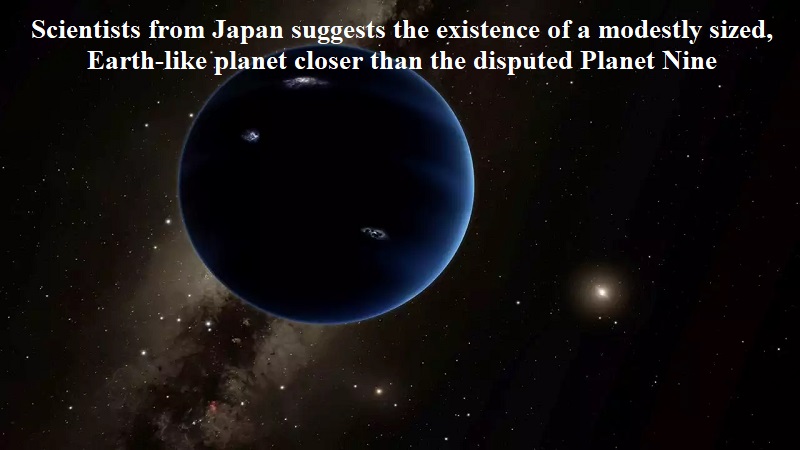
In the ongoing debate regarding the elusive ‘Planet Nine,’ which scientists have been speculating about in the outer reaches of our solar system, two Japanese researchers have introduced a new theory proposing the existence of a less substantial, Earth-like planet closer to us than the disputed Planet Nine.
The scientific community has long been embroiled in a debate about the potential existence of Planet Nine, a hypothetical massive terrestrial planet. This debate commenced after Pluto lost its planetary status and was reclassified as a dwarf planet.
Up to this point, the most distant known object within our solar system is positioned at approximately 132 astronomical units from the Sun. To offer some context, Pluto orbits at an average distance of approximately 40 astronomical units from the Sun.
The New Theory:
In a recent publication in The Astronomical Journal, planetary scientists Patryk Sofia Lykawka from Kindai University in Japan and Takashi Ito from the National Astronomical Observatory of Japan have proposed an alternative explanation.
They propose the presence of a moderately sized, Earth-like planet with a tilted orbit revolving around the Sun, situated closer to the debated Planet Nine.
Recent observations of Trans-Neptunian objects (TNOs) located beyond Neptune have piqued scientists’ interest due to their peculiar clustering behavior, leading to speculations about a hidden world and the notion of a ninth planet concealed beyond our visual reach.
“We predict the existence of an Earth-like planet and several trans-Neptunian objects on peculiar orbits in the outer solar system, which can serve as observationally testable signatures of the putative planet’s perturbations,” stated the researchers.
Scientists have identified numerous TNOs, including icy rocks and dwarf planets, beyond Neptune, with distances from the Sun of around 30 astronomical units, extending as far as our observations can reach. This region is known as the Kuiper belt, and the objects it contains are called TNOs.
Lykawka and Ito claim to have determined the characteristics of a hypothetical planet that could account for “three fundamental properties of the distant Kuiper Belt: a prominent population of TNOs with orbits beyond Neptune’s gravitational influence, a significant population of high-inclination objects, and the existence of some extreme objects with peculiar orbits.”
According to the two scientists, the mass of this potential Earth-like planet would range from 1.5 to three times that of Earth. The farthest point from the Sun in this planet’s orbit would fall between 250 and 500 astronomical units, with an inclination of 30 degrees relative to the plane of the solar system.

Post Your Comments